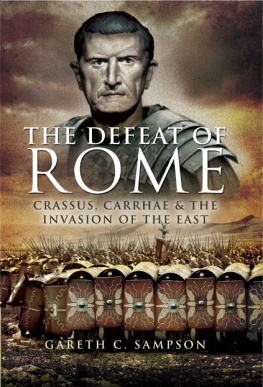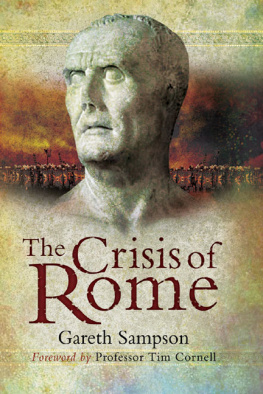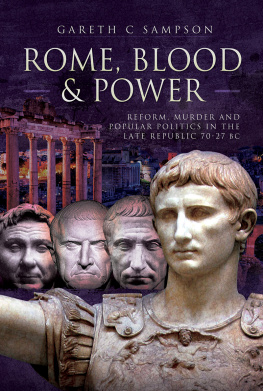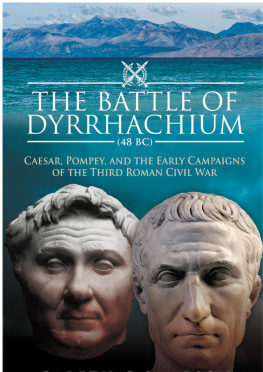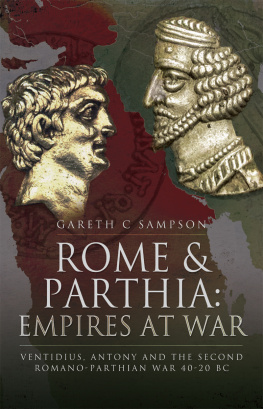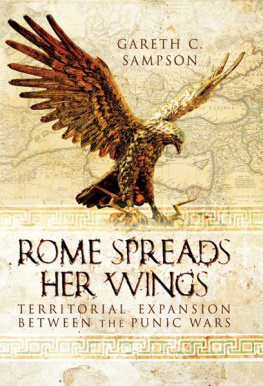

First published in Great Britain in 2008 by
Pen & Sword Military
an imprint of
Pen & Sword Books Ltd
47 Church Street
Barnsley
South Yorkshire
S70 2AS
Copyright Gareth C. Sampson 2008
ISBN 978 1 844156 764
ePub ISBN 9781844686346
PRC ISBN 9781844686353
The right of Gareth C. Sampson to be identified as Author of this Work has
been asserted by him in accordance with the Copyright, Designs and Patents
Act 1988.
A CIP catalogue record for this book is available from the British Library
All rights reserved. No part of this book may be reproduced or transmitted in
any form or by any means, electronic or mechanical including photocopying,
recording or by any information storage and retrieval system, without permis
sion from the Publisher in writing.
Typeset in Ehrhardt, by Phoenix Typesetting, Auldgirth, Dumfriesshire
Printed and bound in England by Biddles, Kings Lynn
Pen & Sword Books Ltd incorporates the Imprints of Pen & Sword Aviation,
Pen & Sword Maritime, Pen & Sword Military, Wharncliffe Local History,
Pen & Sword Select, Pen & Sword Military Classics and Leo Cooper.
For a complete list of Pen & Sword titles please contact
PEN & SWORD BOOKS LIMITED
47 Church Street, Barnsley, South Yorkshire, S70 2AS, England
E-mail:
Website: www.pen-and-sword.co.uk
Contents
To Alex, my wife to be, with love.
Acknowledgements
This book would not have been possible without Rupert Harding of Pen & Sword Books, whose assistance and comments have been invaluable. Thanks go out to Pen & Sword as a whole for commissioning and assisting with the production of this study.
My membership of the Department of Classics and Ancient History, at the University of Manchester and the John Rylands Library, has given me the time and the facilities to work on this project, so my thanks goes out to them. Everyone at Manchester does a difficult job in increasingly trying circumstances.
I would also like to thank the British School at Athens, for allowing me to stay there for a few weeks of glorious peace and quiet, which allowed me to finish this book. They remain an oasis of calm in a mad academic world.
On a personal note, thanks must go out to my parents, who put up with my bizarre choice of career. Special thanks must be given to my wonderful fiance Alex, who has had to put up with the project for the last year and has borne the brunt of my obsession with it, as well as the bulk of initial proof reading. Without her I would be lost.
As always thanks go out to the guys in, or from, the Department at Manchester, for keeping me sane and still interested in academia: (in alphabetical order) Arran, Gary, Greg, James, Old Ian, Sam, Young Ian. Also Peter, for his interest in the topic and chats on various aspects, and Carsten for the last-minute info on Augustan monuments. Sincerest thanks must also go out to Liz Diamond-Jones for her excellent artwork depicting the Roman and Parthian warriors.
Finally, as always, my respects to Tim Cornell, without whose supervision I would not be in academia to write this book.
List of Illustrations
Maps

The Ancient World in the 220s BC

The Ancient World in 55 BC

The Near East at the Time of the First Romano-Parthian War

The Carrhae Campaign
Introduction
In the summer of 53 BC on a plain in northern Mesopotamia, one of the most momentous battles of the ancient world took place. On the one side lay the mighty army of the Roman Republic, a force of over 40,000 strong, intent on annexing the region to the growing empire of Rome. They were led by Marcus Crassus, Romes richest man and the general who had defeated Spartacus. On the other lay a force of no more than 10,000 cavalrymen from the Parthian Empire, who had been sent to stop them.
This was no random encounter, but was the first battle between the armies of the two superpowers of the age: Rome and Parthia. At stake was the future of the ancient world itself, which for the past two hundred years had been carved up between these civilisations, one from the West and one from the East. This was not just a clash between armies, but between civilisations. As it happened, it was Rome who had made the first move and had invaded Mesopotamia (modern Iraq), intent not just on adding the region to their empire, but on spreading their civilisation across the whole of the eastern world.
Given their seemingly-invincible reputation and massive numerical superiority (over four to one), victory for Rome seemed assured, with the Parthians apparently destined to join the growing list of states that had fallen to Rome: Spain, Africa, Greece, Asia Minor and Syria and Judea. However, on the dusty plains of Carrhae, the near-impossible occurred when a Roman army was comprehensively defeated and slaughtered. Out of 40,000 men, barely a quarter made it back to Roman territory, with over 20,000 dead and 10,000 taken prisoner. For Rome, it was the worst defeat in 150 years (since the time of Hannibal) and was their worst defeat in an offensive war ever.
In just one afternoons fighting, the myth of Roman invincibility had been shattered and the seemingly inexorable spread of the Roman empire across the ancient world was halted forever. For the next 700 years, the world was divided between east and west, with the Euphrates and Mesopotamia (Iraq) on the edge of two worlds. Furthermore, amongst the dead was Marcus Crassus himself, who was one of the three Roman generals who dominated the late Republic, in an alliance known as the Triumvirate. Without him, the other two soon fell out. They were Pompey and Julius Caesar and their clash destroyed the Republic and ushered in the Roman Empire.
Therefore, it is clear to all that this battle was, and still is, of paramount importance to the history of the ancient world. Up until now, this area has been largely neglected, for a number of reasons. This study intends to set this balance right and examine not just the battle itself, seeing how the Romans were so comprehensively beaten despite such numerical superiority, but also to assess the whole campaign and war in terms of the clash between these two great empires. Despite defeating the Romans and halting their progress across the eastern world, the Parthians today remain little known. Yet for nearly 500 years they were one of the two great civilisations of the world and the equal of Rome. For this reason, the Parthian civilisation also needs to be examined and highlighted in order to see just who they were and how they managed to defeat Rome.
This study comprises two clear sections. Firstly, it will examine the background to this momentous clash, by looking at the rise of the Roman and Parthian Empires, as well as Marcus Crassus. For too long, the Parthians have been seen as nothing more than a one dimensional enemy whom Crassus lost to through his incompetence, with little wider effect. This, however, is merely the legacy of Roman wounded pride. The Parthians had an empire comparable to Rome and were not merely passive opponents waiting for Roman domination. Likewise, Crassus was no one-dimensional, avaricious bungler whose riches outstripped his military prowess. The defeat was a shocking one and one that exploited flaws in the Roman military and political systems. Only by understanding this background can we appreciate the battle, and the wider war itself.

